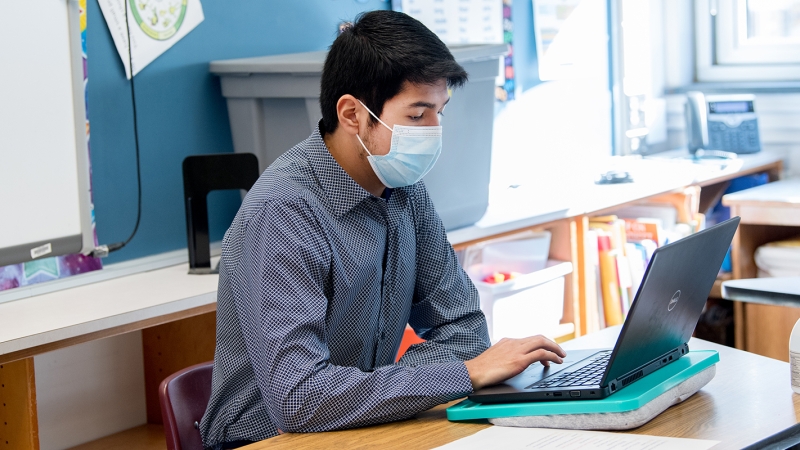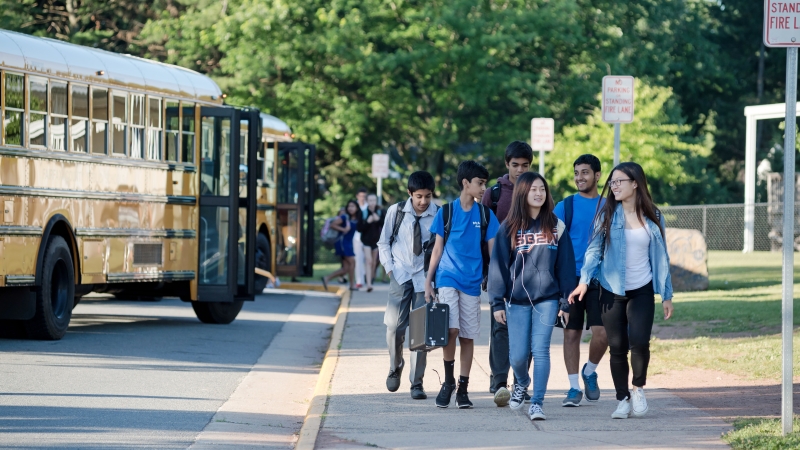
School Refusal
Each year, nearly 5% of youth experience school refusal. This refers to a child refusing to go to school on a regular basis or remain in school throughout the day due to significant emotional distress. School refusal includes kindergarten students with relatively mild separation anxiety and more severe cases where a student misses weeks or months of school because of debilitating anxiety or depression. Besides tearful pleas to stay home, youth with school refusal often complain of aches and pains or other physical symptoms. School refusal can develop at any time, especially when making a transition to a new school. It often shows up more intensely after school breaks, weekends, or periods of illness. Failing to attend school may have significant immediate and long-term social, emotional, and educational consequences for youth. The problem needs to be addressed promptly as the longer a child stays home from school, the more challenging it is to help them return. Missing school reduces stress in the short-term and reinforces avoidance as a coping mechanism. However, this avoidance often increases stress over the long-term and does not teach a child more adaptive ways of coping.
Getting Your Child Back to School
- If you suspect that your child is experiencing school refusal, it is important to seek out help quickly. Contact the school counselor, school psychologist, or school social worker at your school for assistance and resources. You may also wish to access professionals such as a physician to rule out any medical issues or a mental health therapist to assist in responding to the situation.
- Addressing school refusal can be quite challenging and therefore, it often takes a team approach involving the family, educators including school support staff, and community or private providers. A team can meet to assess the situation of why your child is not attending school and develop a reentry plan that addresses the steps to be taken at home and school to jump-start your child’s school attendance. It may be appropriate to develop a Return to Learn plan with school staff which can address the following issues: a modified attendance schedule with progressive school reentry; a set morning routine upon arrival to school; available school-based mental health supports and how your child can seek out any necessary help; a manageable plan for making up missed work, as well as modifying homework and classroom work as needed; and identified goals for attendance and reinforcement for behaviors that are approaching success.
- Talking with your child about feelings and fears may help reduce their anxieties. Help your child reframe negative thoughts and identify negative or unhelpful thinking patterns. Encourage your child to recognize the good things he/she does instead. Emphasize positive aspects of going to school (e.g., seeing friends, learning favorite subjects, enjoying recess). Ensure your child that school is a safe place with many supportive adults.
- Maintain a clear expectation of school attendance. Establish consistent evening and morning routines at home. Keep as similar a schedule as possible during the weekends and short breaks.
- Provide reinforcement for positive, school attending behaviors. Consider utilizing a contract to set expectations and goals for attendance and highlight reinforcement to be earned when sufficiently met.
- Work hard to ignore somatic complaints when appropriate. Students with emotional distress may truly be feeling queasy and achy. However, it is often part of the distress and not a true medical issue. For students with known school refusal issues, it may be best to clearly outline that school attendance is necessary unless they have a fever, physical injury, or repeated vomiting. Try not to discuss the somatic complaints with the child, but rather focus on recognizing positive behaviors such as getting ready for school.
- Welcome the separation-anxious child when he or she arrives at school. Help the child become involved in getting organized for the day. Give the child special jobs, such as handing out papers or collecting books. Praise and encourage the child and provide comfort to younger students when they are upset.
- Assign a peer buddy at recess or lunch to help a socially anxious child feel more comfortable. Some
schools issue personal invitations to events and activities to help students feel welcome. - Provide tutoring and other academic interventions and supports for students who have academic
difficulties. - Show sensitivity to students with performance anxiety. Reduce the need for the student to give speeches or provide an alternate test-taking environment.
- Identify a safe space with a trusted adult where the student can go when feeling stressed or overwhelmed.
If you or someone you know may be experiencing a mental health challenge or crisis, text HOME to 741741 to reach a crisis counselor, call 1-800-273-8255 to reach the National Suicide Prevention Lifeline, or call 911.
The Healthy Minds Blog shares information related to youth mental health and wellness for an audience of parent, educators and community-based providers. Articles include tips and strategies for increasing wellness and resiliency, as well as fostering success at home, at school and in the community.
The Healthy Minds Blog is a collaborative project between Fairfax County Public Schools and the Prevention Unit of the Fairfax County Department of Neighborhood and Community Services. It is part of the Healthy Minds Fairfax (see below) initiative, designed to support emotional wellness in youth and families.
SUBSCRIBE to Healthy Minds and receive a quarterly digest of our most recent articles.








